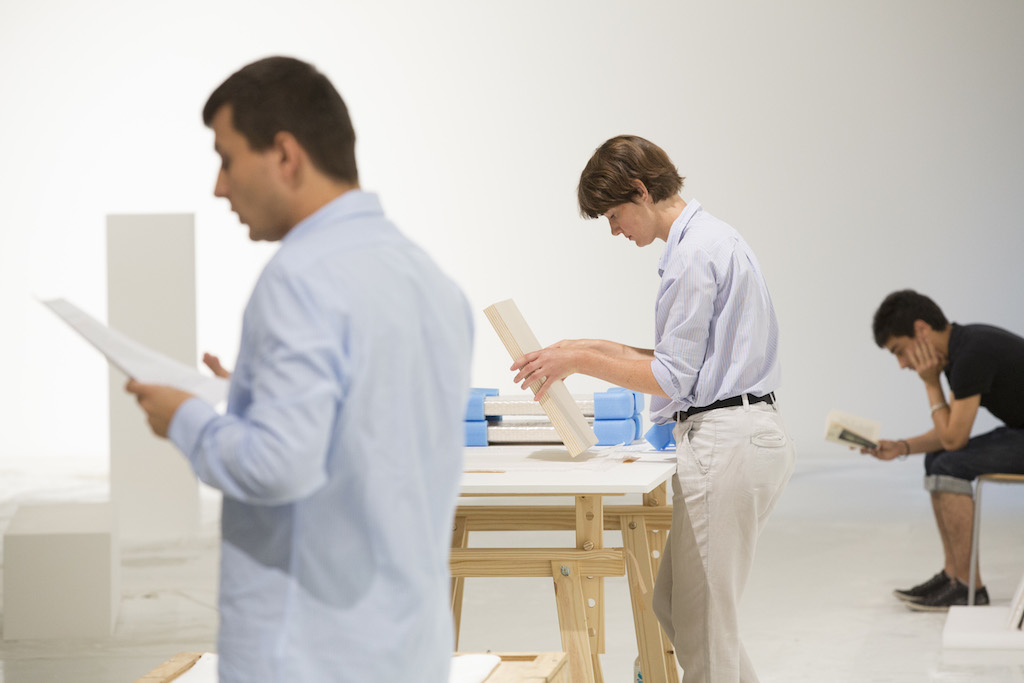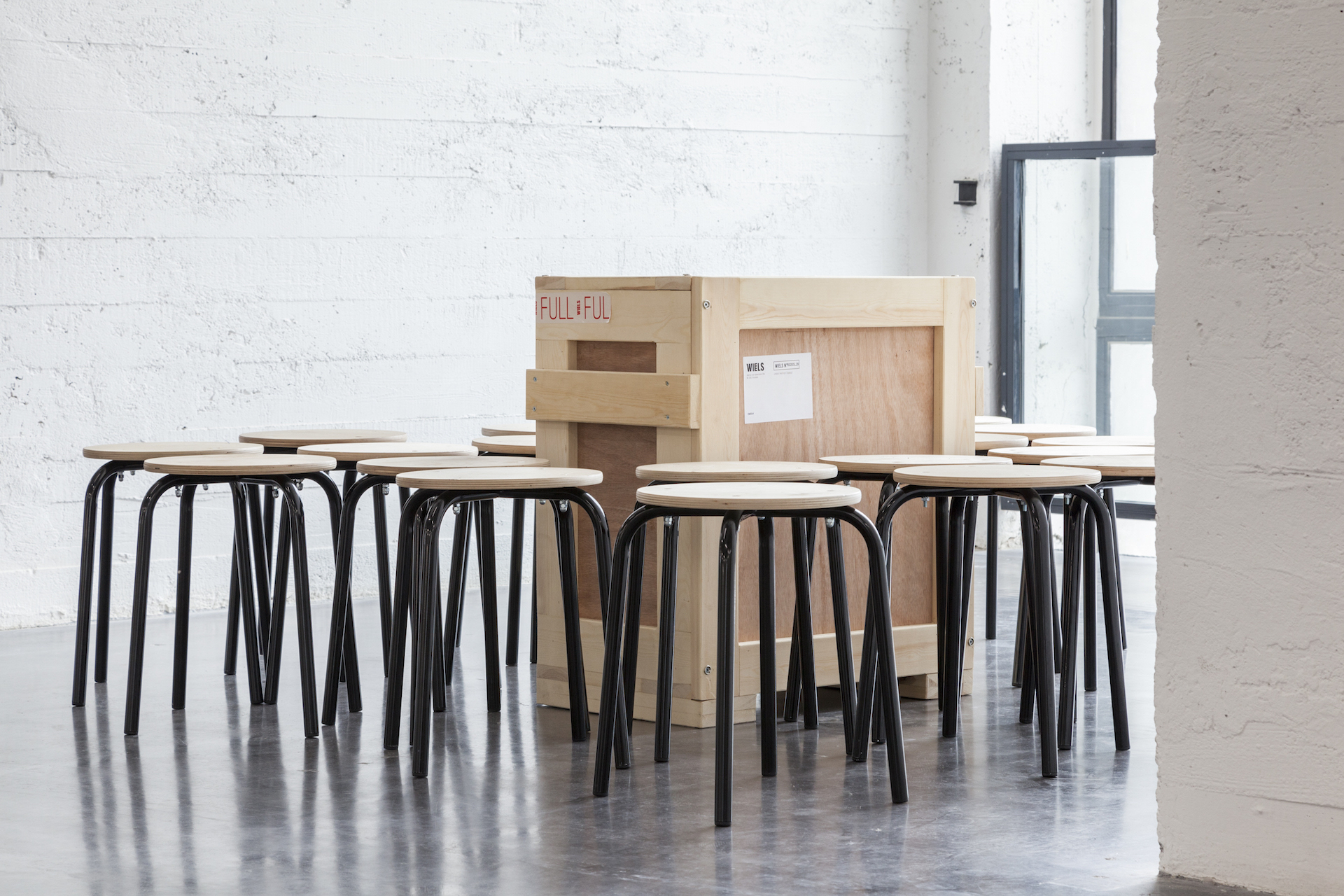Béatrice Balcou
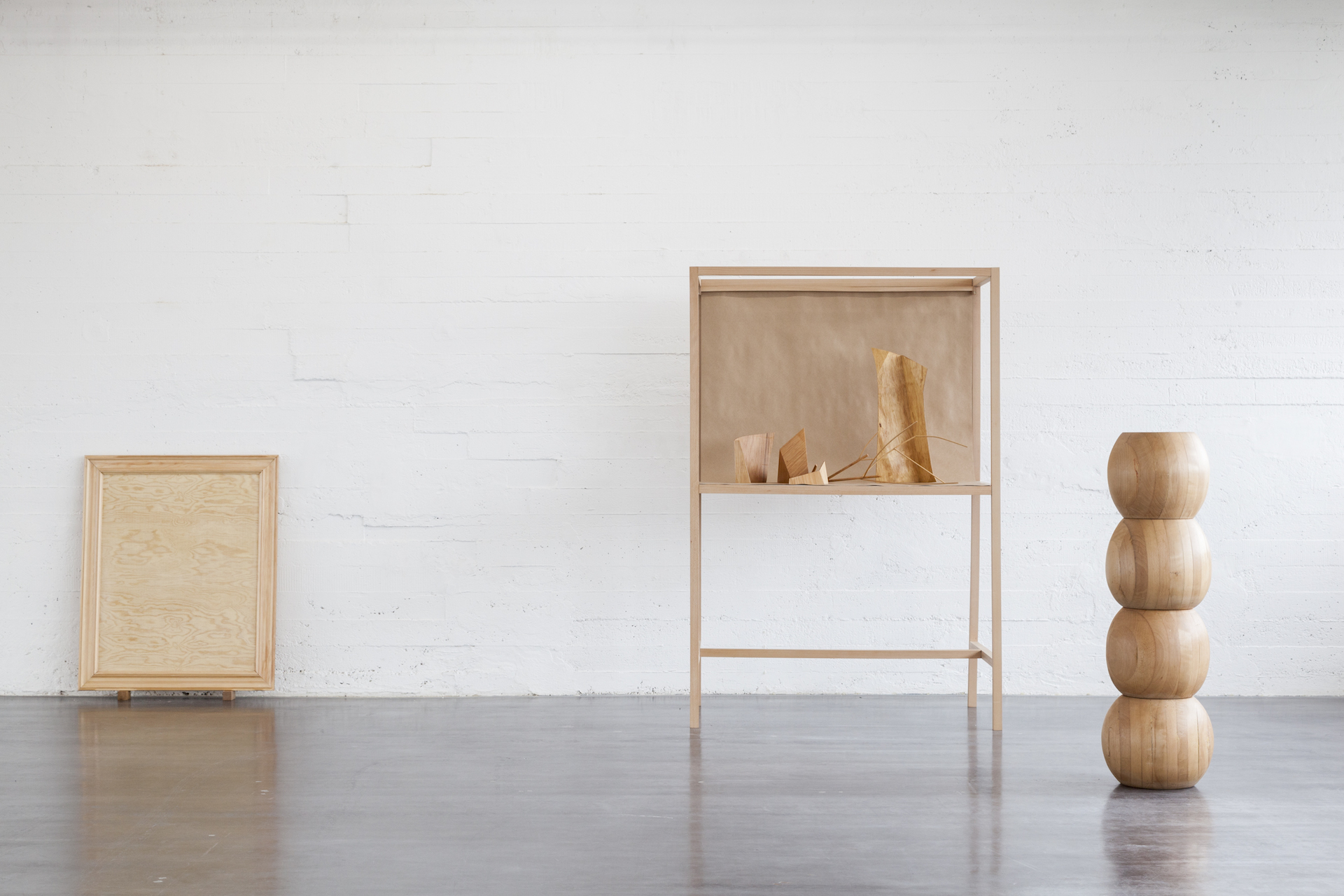
Portrait of the artist as a long-distance runner: slow, silent, and sensual
For several years now, the art praxis being developed by Béatrice Balcou has focused on the attentive eye she casts on the works of other artists and on the tirelessly repeated gestures of other people involved in the various art worlds1. In the exhibition which lasted for just a single day at the FRAC Franche-Comté, titled “Chaque Chose en Son Temps” [Everything in its Time], 2 Béatrice Balcou chose the interlude between two temporary shows to occupy all the FRAC’s exhibition areas and present works which shared her concerns about notions of time and work. “Chaque Chose en Son Temps” included works by Béatrice Balcou, Manon de Boer, Carole Douillard, Mark Greffiaud, Laura Lamiel and Marie Lund, but also discreetly incorporated the installation-in-progress of the next exhibition, by leaving all the elements usually hidden from the public visible (stands and pedestals in the process of being painted, works being unpacked, etc.). In that exhibition, which she did not especially claim to have curated, but which she regarded rather as being part and parcel of her artistic approach, Béatrice Balcou presented Untitled Performance #2 (2012), consisting in a single activity carried out throughout the exhibition: for four hours, she packed up and unpacked three planks, seen as substitutes for artworks. Placed on trestles, with their corners protected by foam rubber, those planks and all the gestures applied by the artist made reference to a habitual and daily procedure in the museum world. Here, however, the artist executed them with a choreographed precision and a keen elegance, repeating them in a loop in such a way that, for viewers and herself alike, this subtly rhythmic action took on a meditative quality.
Trained in performance practices as part of the EX.E.R.CE postgraduate course supervised by Mathilde Monnier and Xavier Le Roy at the Centre National Choréographique in Montpellier (F), inspired by the originally Japanese tea ceremony ritual, and by her own martial arts practice, Béatrice Balcou has gradually put together a set of procedures titled Untitled Ceremony. For these ceremonies, she elects to work around a one-off artwork which she herself has not produced. Invited to different exhibition situations in Quimper,3 Liège,4 and Louvain,5 she has developed a research system enabling her to test the links between the institution within which she is pursuing her project, and the museums and collections towards which she turns to find the work on which her performance will be based. All her thinking and energy are involved in the wish to devote a special time and attention to a work, which she renders material by producing a form of replica of the chosen work. This replica, which she calls a “placebo” work, is made entirely of wood, and permits her, along with other performers trained by her, to operate prior to the public performance. The placebo work is not just a rehearsal prop; Béatrice Balcou lends it the status of a fully-fledged work, giving it its own place in the exhibition context. This work is thus displayed in different ways, depending on the diverse exhibition situations, more or less close to the original work at the centre of the performance.
In her solo show at the Casino Luxembourg, titled “Walk in Beauty”6, Béatrice Balcou suggested working with Bojan Sarcevic’s Vitrine (film 3) (2008), which is part of the Mudam collection in Luxembourg. The exhibition was constructed around the relation between the placebo work made by Béatrice Balcou and Sarcevic’s work, from which only the display case was left visible to the public, with the remainder of the original parts—made of copper, wood, Perspex®, paper and glass—kept out of sight in their transportation crates. Twice a week, outside the art centre’s usual opening hours, the performance enabled the public to see the work in its entirety.
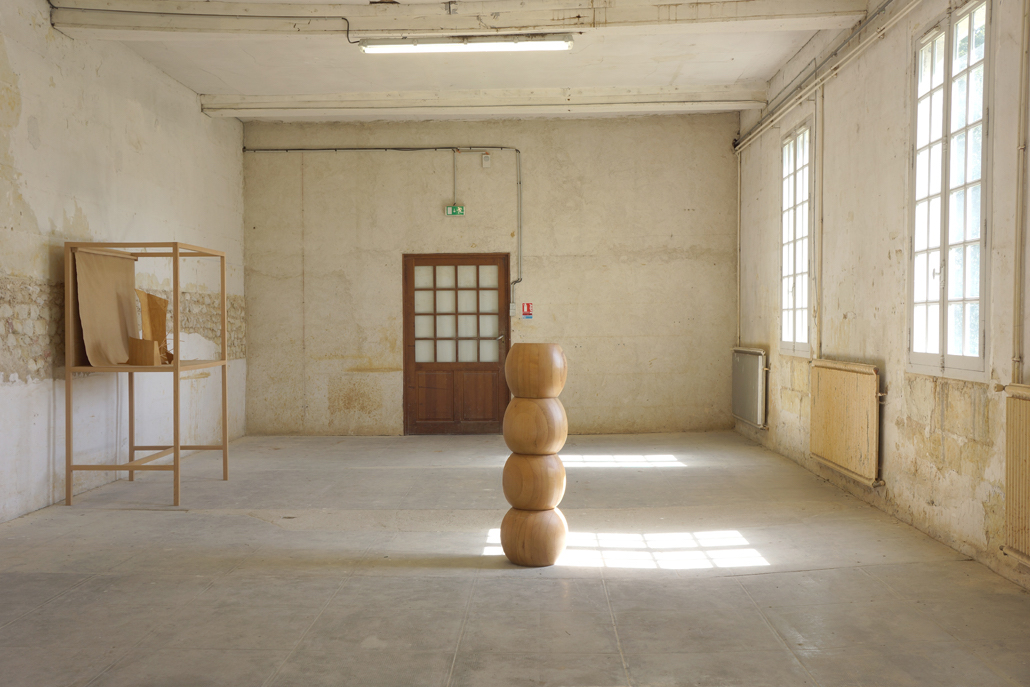
Béatrice Balcou, Les Apostrophes Silencieuses, « Architropismes », Les Moulins de Paillard, Poncé-sur-Loir, 2016 © jgp.
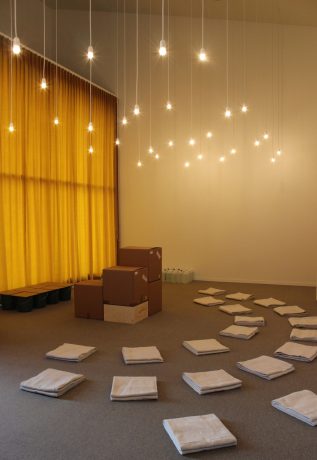
Béatrice Balcou, Untitled Ceremony #04, M Museum, Leuven (Playground festival), 2014 © Dirk Pauwels.
With the gradual development of the ceremonies, the placebo works seem to have become increasingly significant, shedding their relation to the original work. During her participation in the group show “Un-Scene III”7 at theWiels venue in Brussels, Béatrice Balcou thus brought together for the first time a set made up of four placebo works under the title Apostrophes silencieuses (2015).8 Brought together again in the exhibition “Architropismes”9 at Les Moulins de Paillard, these works form a strange community somewhere beyond the historical and aesthetic differences of the original works. They appear like ghostly figures, reminiscences of other aesthetic experiences. If their form directly echoes the works they refer to, the wood, which is the only material they are made of, lends them a resemblance which requires the viewer to pay special attention, because the eye is absorbed and slowed down by the absence of colours. It seems essential to regard in a complex manner the way different levels of perception are called upon by these works. In the title chosen by Béatrice Balcou, the visual dimension of the placebo works, hallmarked by the wood’s neutrality, finds its counterpoint in an acoustic dimension evoked by the reference to silence. Slowness and duration, essential qualities of Béatrice Balcou’s performances, are prolonged and become complementary in the neutrality and silence highlighted by the placebo works.
By repeatedly tackling the issue of the replica, Béatrice Balcou nevertheless introduces differentiation and transformation into the core of her praxis. If the gap which separates the original work from the placebo work is shown by the choice of always making the replica with wood, whatever the materials of the work reproduced might be, each placebo work calls the relation between resemblance, difference, original and copy into question in different ways. In 2015, the FRAC Franche-Comté acquired Untitled Ceremony #7 (2015), a performance as yet unperformed, based on Nina Beier’s Cars Non Finito (2010). Nina Beier’s work is a block of wood which the artist started to sculpt but intentionally left unfinished, offering herself the possibility—such a clause was included in the contract—to work again on the sculpture after it became part of the collection. This choice prompted Béatrice Balcou to produce a placebo work whose resemblance with the original is very marked, if fleeting. The resemblance challenge henceforth seems to be completely secondary in relation to another more essential challenge, that of conceptual affinity and the desire to create the possibility of an exchange and a conversation between works and practices.
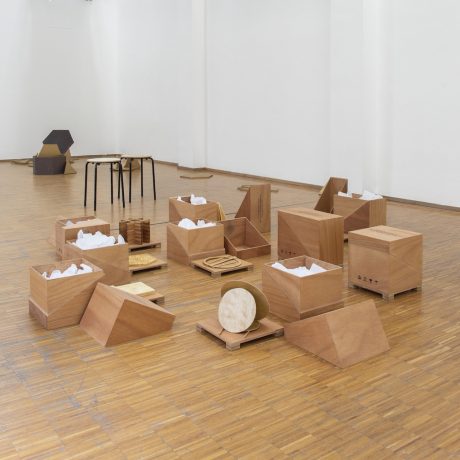
Béatrice Balcou, The K. Miyamoto Boxes, (premier plan), Kazuko Miyamoto, Hatbox, (second plan), « Béatrice Balcou | Kazuko Miyamoto », Iselp, Bruxelles, 2016 © Gilles Ribero.
When Florence Cheval invited Béatrice Balcou to exhibit alongside Kazuko Miyamoto, the curator saw affinities between the activities of the two artists which go beyond any differences of context and period.10 Béatrice Balcou duly explored Kazuko Miyamoto’s œuvre, met the artist in New York, and helped with the installation of some of her works and shows, delving into the history of that work and using her methods and techniques, the way an assistant or a museum curator would do. In the course of her research, Béatrice Balcou drew up a list of nine Miyamoto pieces which had been damaged or destroyed, which had disappeared, or which had simply not received any critical attention from curators. She then produced The K.Miyamoto Boxes (2016), nine placebo works accompanied by nine boxes, also made of wood, making it possible to transport, keep and present the works in the exhibition context. Only three pieces were exhibited outside their boxes at the same time: Béatrice Balcou regularly invited someone to put them away and bring out others, sharing with those guests a special moment around a work where visitors to the show could be possible witnesses. A short text was associated with each placebo work left uncovered, taken from a transcript of Kazuko’s Miyamoto’s stories about the chosen pieces, as told to Béatrice Balcou. The exhibition also involved other works by each of the artists, such as Kazuko Miyamoto’s Hatbox (enclosed) (1975), a wooden box containing six identical hexagonal volumes and thirty-six identical triangular volumes made of plaster covered with gold paint, scattered throughout the exhibition space. For this show, Béatrice Balcou also devised works which have the function of a support: Nine Stools for an exhibition space (2016) is a series of wooden and metal stools scattered in the exhibition space, designed to offer visitors many different viewpoints and a chance to sit down and take time to look at the works. Walls for K. Miyamoto (2016) is a wooden structure formed by dismountable walls, forming a corner and making it possible to present Miyamoto’s Illusion of Trail Dinosaur (1979). This desire to propose a support offers another essential clue for looking at Béatrice Balcou’s work: the artist is part of a relation of dependence on and indebtedness to visitors, the institution, and other artists. Her works are incorporated in these complex relations of dialogue and exchange, which fuel them, and which they help to transform, championing a humble and generous approach to art.
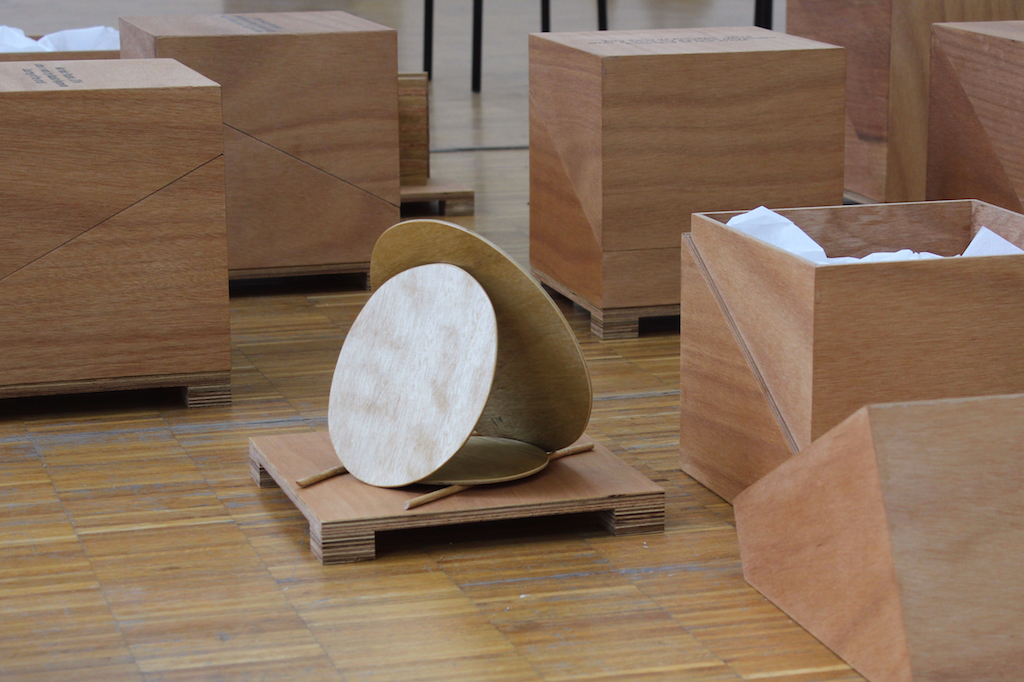
Béatrice Balcou, The K. Miyamoto Boxes (détail), « Béatrice Balcou | Kazuko Miyamoto », Iselp, Bruxelles, 2016 © Béatrice Balcou.
1 The expression “art worlds” is borrowed from the book thus titled by the sociologist Howard S. Becker (Les Mondes de l’art, Paris, Flammarion, 1988). It seems relevant to me to take into consideration the existence of many art worlds whose relations are porous and make it possible to imagine different forms of interaction.
2 “Chaque Chose en Son Temps”, FRAC Franche-Comté, Besançon, Saturday 7 September 2013.
3 “Luxe, calme et volupté”, Project room, Le Quartier, Quimper, from 31 January to 16 February 2014. Curated by Keren Detton.
4 On 12, 13 and 19 December 2013, as part of the RAVI residencies, Brasserie Haecht 251 Nord, Liège. Other ceremonies were held in Brussels, for example for the exhibitions at the Wiels centre in 2015 and at the Iselp in 2016.
5 Untitled Ceremony #04, performance, 50’, M Museum, Leuven (Playground festival) Belgium, 2014. Performers : Béatrice Balcou, Agnese Negrini. With the work Bain de Lumière (1998) by Ann Veronica Janssens (Cera collection, M Museum, Leuven, Belgium).
6 “Walk in Beauty”, Casino Luxembourg, from14 July to 7 September 2014.
7 Bringing together thirteen emerging Belgian artists, living in Belgium, “Un-Scene III” took place from 30 May to 9 August 2015 at the Wiels in Brussels. Curated by Zoë Gray and Devrim Bayar.
8 With the works Paysage placebo, wood, 106,8 x 89 cm, 2015 (based on a work of Theophile Narcisse Chauvel) ; Vitrine (film 3) placebo, wood and paper, 187 x 125 x 80 cm, 2014 (based on a work of Bojan Šarčević) ; Bain de lumière placebo, wood, 128 x 40 x 40 cm, 2014 (based on a work of Ann Veronica Janssens) ; Children’s trolley (I Had Trouble in Getting to Solla Sollew) placebo, wood, 42 x 43 x 21 cm, 2015 (based on a work of Rodney Graham).
9 “Architropismes”, from 9 July to18 September 2016 at Les Moulins de Paillard, Poncé sur le Loir, France. With Béatrice Balcou, Shqipe Gashi, Hedwig Houben, Saskia Noor van Imhoff, Pieter van der Schaaf, Tatiana Trouvé. Curated by: Rozenn Canevet and Marlise van der Jagt.
10 Kazuko Miyamoto (born in 1942 in Japan ; lives and works in New York) was a founder member of the A.I.R. Gallery in New York in 1972, and one of Sol LeWitt’s first assistants. “Béatrice Balcou/Kazuko Miyamoto”, Iselp, Brussels, from 21 April to 2 July 2016. Curated by: Florence Cheval.
Related articles
Céleste Richard Zimmermann
by Philippe Szechter
Julien Creuzet
by Andréanne Béguin
Anne Le Troter
by Camille Velluet
